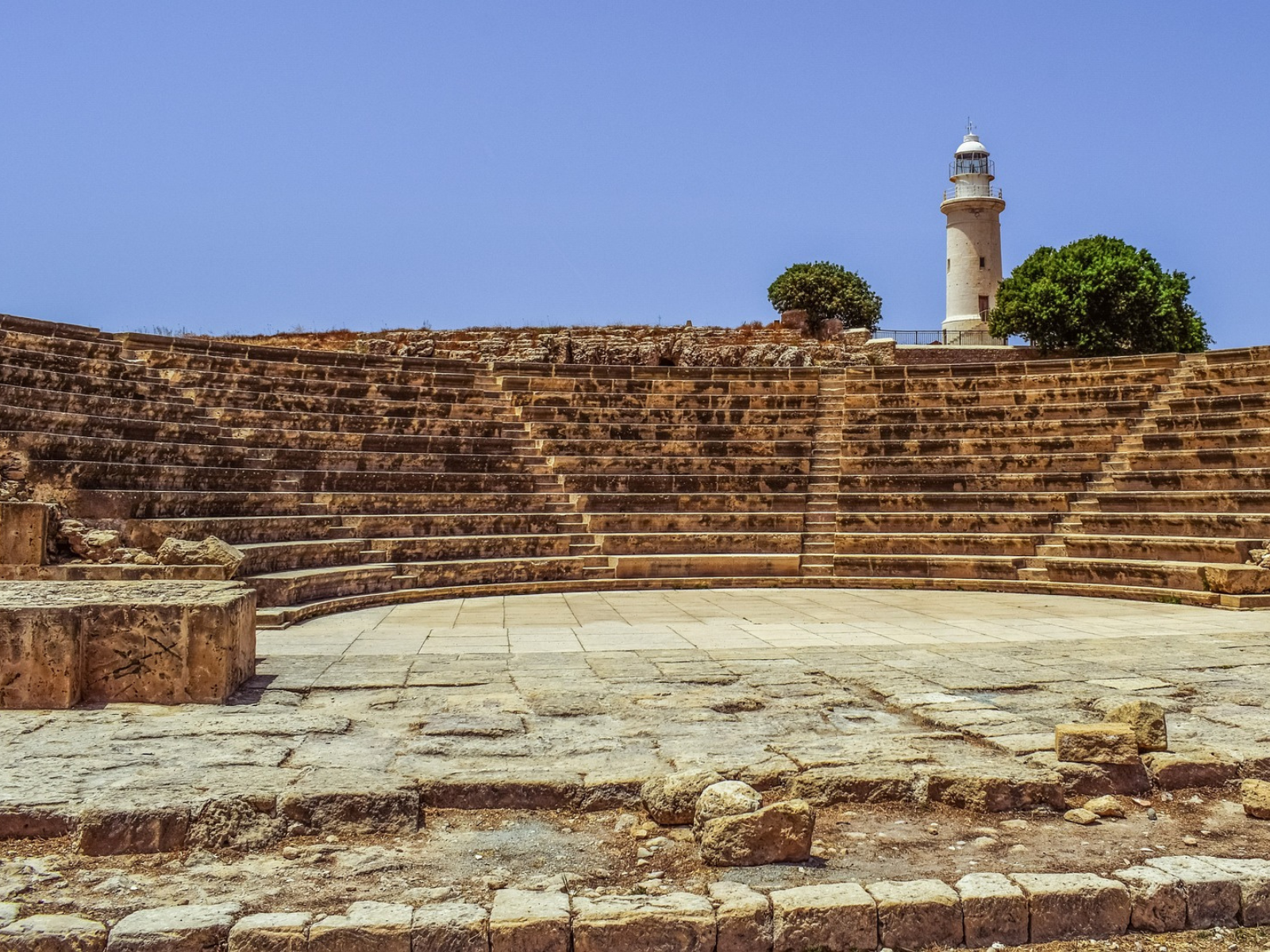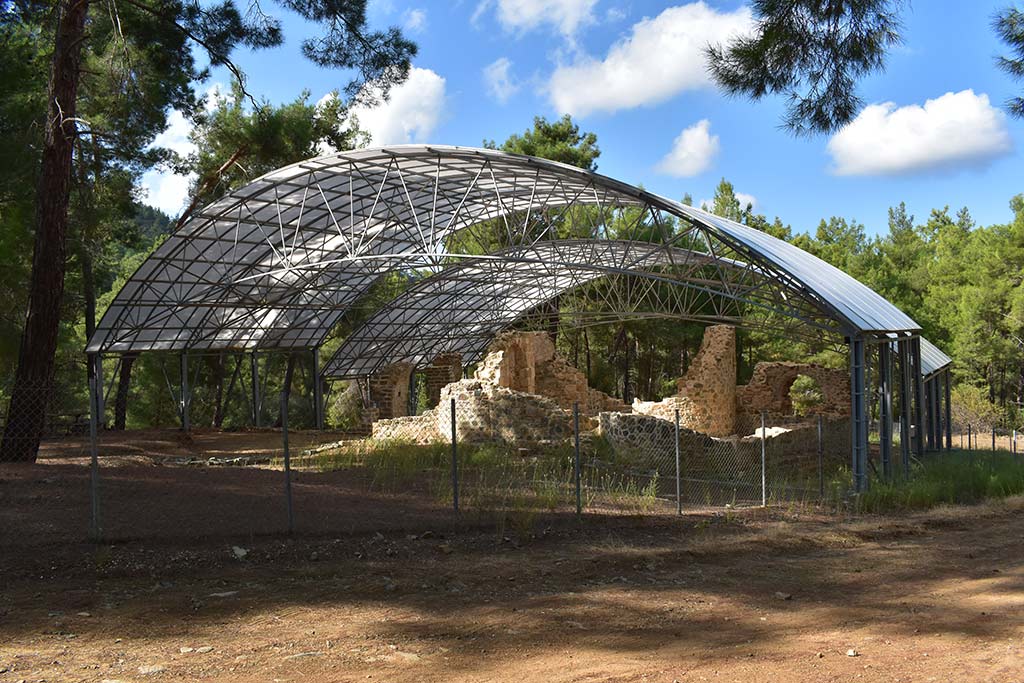
PAPHOS GUIDE: EXPLORE ANCIENT HISTORY IN PAPHOS
Paphos, a city in southwest Cyprus, has a long and illustrious past. In actuality, during the Hellenistic and Roman eras, it served as the capital of Cyprus. The Archaeological Park, which houses remain from the prehistoric, classical Greek, Roman, and early Christian eras, is one of Paphos’ most well-known locations.
Visitors can see the remains of a Neolithic settlement at the prehistoric site, which includes circular homes and tombs. The ruins of four sizable villas, thought to have belonged to wealthy families, can be found in the park’s classical Greek area. The impressive amphitheater in the Roman area, along with the ruins of a marketplace, an agora, and public bathrooms, can accommodate up to 8,500 people.
The early Christian portion of the Archaeological Park, which contains the remains of several significant basilicas and the renowned House of Dionysus, is certainly its most impressive feature. Some of the world’s most intricate and well-preserved mosaics, which show scenes from Greek mythology and daily life, are used to adorn this home.
Beyond the Archaeological Park, visitors can also investigate the Hellenistic-era necropolis known as the Tombs of the Kings, which was carved out of the rock. These imposing and elaborate monuments were probably used as cemeteries by rich families.
Paphos is a historical treasure trove that gives visitors a look into the lives of people who resided in the area thousands of years ago. Paphos has attractions for people who are interested in early Christian art, classical Greek buildings, or prehistoric settlements.
Paphos Guide recommends visiting these sites outside of the sunniest part of the day, between 12:00 – 3:00 PM. Don’t forget to bring sunscreen, sunglasses, a hat, and a bottle of water to stay hydrated!
Table of Contents
Paphos Archaeological Park
The Archaeological Park in Paphos is a historical site located in the southwestern part of Cyprus. The park covers a vast area of around 100,000 square meters and includes a variety of ancient ruins and archaeological sites.
One of the most significant attractions in the park is the House of Dionysus, a well-preserved Roman villa that dates back to the 2nd century AD. The villa is famous for its exquisite mosaics, which depict scenes from Greek mythology and daily life.
Other notable sites in the park include the House of Theseus, the House of Aion, and the House of Orpheus, all of which feature impressive mosaics and other architectural elements. The park also contains the remains of several ancient tombs and a theater that could seat up to 2,000 people.
In addition to these historical sites, the Archaeological Park in Paphos also offers stunning views of the Mediterranean Sea and the surrounding landscape. Visitors can stroll through the park and take in the sights and sounds of this ancient city while learning about the rich history and culture of Cyprus.
This is a must-see destination for anyone interested in archaeology, history, or culture, and it is a great place to explore for those who simply appreciate beautiful landscapes and ancient architecture.
Open Hours:
- April 16 – September 15, daily: 08:30 – 19:30
- September 16 – April 15, daily: 08:30 – 17:00
Entrance Fee: €4,50
Tombs of the Kings
A necropolis that dates back to the Hellenistic and Roman periods, from around 300 BC to 300 AD. The name “Tombs of the Kings” is a misnomer, as the tombs were actually used by wealthy aristocrats and not by kings.
The site consists of a complex of underground tombs, some of which are elaborately decorated and have multiple chambers. The tombs are cut into solid rock, and many of them are decorated with elaborate frescoes, pillars, and sculptures.
The most significant feature of the Tombs of the Kings is the scale of the underground structures. These tombs are large and imposing, and they reflect the wealth and status of the individuals buried inside. The architecture of the tombs is also impressive, with intricate patterns and designs carved into the stone walls and ceilings.
The site is open to visitors, and guided tours are available. Visitors can explore the underground tombs and learn about the customs and traditions of the Hellenistic and Roman periods. The site is also an important historical and cultural landmark in Cyprus, and it provides a glimpse into the lives of the wealthy and powerful individuals who lived during this time.
Open Hours:
- April 16 – September 15, daily: 08:30 – 19:30
- September 16 – April 15, daily: 08:30 – 17:00
Entrance Fee: €2,50
Medieval Castle of Paphos
The Medieval Castle of Paphos is a historical landmark located on the western edge of the city of Paphos in Cyprus. The castle was originally built in the 13th century by the Lusignans, a Frankish dynasty that ruled Cyprus at the time. The castle was built on the site of an earlier Byzantine fortress, which had been destroyed by an earthquake.
The castle was used as a fortress and a prison during the Lusignan period and later by the Venetians, the Ottomans, and the British. During the Ottoman period, the castle was used as a prison, and it is said that many prisoners were tortured and executed there.
The castle has undergone several renovations over the centuries and has been restored to its original medieval appearance. It is now a popular tourist attraction and a cultural center, hosting concerts, exhibitions, and other events.
The castle is built on a rocky outcrop overlooking the sea, and it offers stunning views of the surrounding landscape. Visitors can explore the castle’s ramparts, towers, and dungeons, and learn about the history and culture of Cyprus during the medieval period.
Open Hours:
- April 16 – September 15, daily: 08:30 – 19:30
- September 16 – April 15, daily: 08:30 – 17:00
Entrance Fee: €2,50
Ancient Kourion
In antiquity, Kourion was one of the most significant city-kingdoms on the island. Its archaeological remains are among the most impressive on the island, and excavations have turned up numerous important artifacts that can be seen there.

In fact, the earliest evidence dates to between 4,500 and 3,900 BC, suggesting that Kourion was first settled during the Neolithic period. The town was established in the 13th century BC by the Argives.
The area is home to a number of monuments, many of which date back to the Roman era. These include the Forum, the Nymphaeum, the Public Baths, the Fountain House, and the House of Achilles in addition to the Amphitheater.
One of the most famous villas is the House of Gladiators, which was built in the second half of the third century AD. Its name comes from a group of mosaics near its central courtyard that show gladiatorial contests.
The ancient Kourion amphitheater still serves as a venue for theatrical and musical performances because of its superb acoustics.
Open Hours:
- September 16 – April 15, daily: 08.30 – 17:00
- April 16 – September 15, daily: 08:30 – 19:30
Entrance Fee: €4,50
Sanctuary of Aphrodite

Kouklia Village is home to the archaeological site of Palaepaphos, or “old Paphos,” which was one of the most significant city-kingdoms in Cyprus and the first Cypriot site to be added to UNESCO’s World Heritage List in 1980.
The ancient Greeks revered Paphos as a sacred site because they thought it was where Aphrodite landed after rising from the sea. Not just for Cyprus, but for the entire Aegean region, the Sanctuary of Aphrodite Paphia served as the center of goddess worship.
Open Hours:
- September 16 – April 15, daily: 08.30 – 17:00
- April 16 – September 15, daily: 08:30 – 19:30
Entrance Fee: €4,50
Gialia Monastery

David Kuropalates, King of Tao Kiarjeti, established the Gialia Holy Mother Georgian Monastery between 970 and 979 in what is now northwest Turkey but was then southwest Georgia. The Gialia Monastery was given special attention by the Georgian kings David Agmashenebeli (1089–1125) and Tamar (1184–1210), who also established it as a significant hub for Georgian culture in Cyprus. The monastery had a strong educational center at its core, where books were copied and translated that can now be found in libraries around the globe. With an annual income of 300 ducats, the Gialia Monastery ranked among the wealthiest monasteries in Cyprus, according to written sources.
The tri-conch domed church that serves as the monastery’s primary temple is the only one of its kind in Cyprus, but there are many others in Georgia, particularly in Tao-Klarjeti.
The scenes of Christ’s baptism in the south apse and the descent from the cross in the north apse are painted throughout the interior of the church. Holy fathers are represented in part at the altar, and pieces of painted iconostases were discovered in the church’s ruins. The primary layer of the monastery’s wall painting is a prime example of the Komnenian Epoch’s (12th Century) highly inventive painting aesthetic.
After Cyprus was taken over by the Ottomans in 1571, the monastery was repeatedly destroyed by earthquakes and abandoned in the late 16th century.
Open Hours:
- May – August, daily: 09:30 – 12:30; 13:30 – 18:30
- September – April, daily: 10:00 – 12:30; 13:30 – 16:00
Entrance Fee: Free
Frankish Baths

The baths’ restored home is in Kato Paphos, northeast of the city’s mosque, and its construction is thought to have taken place in the late 14th or early 15th century. It was rebuilt at the start of the Turkish occupation, when domes were put in place of some of the building’s semi-circular arches. It consists of two sizable chambers with a dome and two smaller semi-circular arches that were constructed next to the lobby, and it appears to be a part of a larger structure. The skylight dome, whose glass-covered openings are still visible, provided interior lighting since the bathrooms lacked windows.
The baths were run using a heated burning system, in keeping with Byzantine and Roman customs. This system raised the floors and supported them on brick pillars to create low, typically underground spaces beneath the floors. These locations permitted the circulation of hot gases produced by wood burning in a furnace that was specifically made. The gases then entered the atmosphere via pipelines that were buried in the walls. A steam bath resulted from the combustion system’s significant elevation of the floor’s temperature, which caused water to evaporate while taking a bath. Customers had to wear tall wooden clogs to keep their feet on the hot plates because of this.
Open Hours:
- May – August, daily: 09:30 – 12:30; 13:30 – 18:30
- September – April, daily: 10:00 – 12:30; 13:30 – 16:00
Entrance Fee: Free